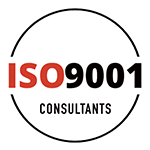Getting ISO 9001 certified may seem like a daunting task, but it doesn’t have to be. This certification can bring many benefits to your business, including improved quality control, better customer satisfaction, and a stronger market position. The process involves understanding the requirements, preparing your business, implementing a quality management system, and successfully navigating the certification audit.
ISO 9001 sets out the criteria for a quality management system (QMS) and is based on quality management principles such as strong customer focus, involvement of top management, and continuous improvement. By following these guidelines, businesses can ensure that they meet customer expectations and regulatory requirements.
Becoming ISO 9001 certified involves a series of steps that must be followed closely. It’s essential to prepare properly and understand each phase of the process. For businesses looking to improve their operations and reputation, achieving ISO 9001 certification can be a game-changer. In this article, we’ll break down the steps to make this process easier and more manageable for you.
Understanding ISO 9001 Requirements
The first step to getting ISO 9001 certified is understanding the requirements. At its core, ISO 9001 sets out the criteria for a quality management system (QMS). This standard is based on seven quality management principles, including customer focus, leadership, engagement of people, process approach, improvement, evidence-based decision making, and relationship management.
The ISO 9001 standard requires businesses to follow specific guidelines to ensure quality control in all processes. This involves defining your quality policy and objectives, understanding the context of your organisation, and identifying the needs and expectations of interested parties. You’ll also need to establish a system for managing risks and opportunities, which helps in maintaining consistent quality.
Moreover, documentation is crucial. You’ll need to document procedures, work instructions, and quality policies. This ensures that everyone in the organisation knows what is expected and can follow the procedures consistently. Keep in mind that ISO 9001 also requires regular internal audits to check that the quality management system is effective and up to date. Understanding these requirements is essential before moving on to implementation.
Preparing Your Business for Certification
Once you understand the ISO 9001 requirements, the next step is preparing your business for certification. Start by conducting a gap analysis to find out where your current processes stand compared to the ISO 9001 standards. This will help you identify areas needing improvement.
Employee training is another crucial aspect. Make sure all employees understand the importance of the QMS and their role in it. Conduct training sessions to educate them about the ISO 9001 standards, processes, and documentation procedures. Engaged and informed employees are essential for a successful implementation.
Develop a project plan to address the gaps identified during your analysis. Assign roles and responsibilities to team members and set up a timeline for achieving each task. It’s important to involve top management in this process, as their commitment and leadership are vital for the project’s success. Regularly update them on the progress and any challenges faced.
Lastly, establish a system for internal audits. These audits will help you identify any issues before the formal certification audit. By preparing thoroughly, you can ensure that your business is ready for the next stages of the ISO 9001 certification process.
Implementing the Quality Management System
After preparing, it’s time to implement the Quality Management System (QMS). Start by updating or creating your quality policy, procedures, and work instructions. These documents should clearly outline how your organisation meets the ISO 9001 standards. Share these documents with your team to ensure everyone understands their roles and responsibilities.
Next, set up processes to monitor, measure, and evaluate your QMS. Use key performance indicators (KPIs) to track progress and identify areas for improvement. Regularly reviewing this data helps in making informed decisions and ensures continuous improvement.
Employee involvement is crucial during the implementation phase. Encourage feedback and suggestions from your team. They are the ones working with the processes daily, and their insights can be invaluable. Conduct regular training sessions to keep everyone updated on any changes in procedures and reinforce the importance of adhering to the QMS.
Finally, conduct internal audits to check the effectiveness of the QMS. Look for any non-conformities and take corrective actions promptly. These audits help in ensuring that your system is always aligned with ISO 9001 standards and ready for the certification audit.
Navigating the Certification Process
With the QMS implemented, the next step is to navigate the certification process. Start by choosing an accredited certification body to conduct your audit. Preparing for this audit is crucial, so review all your documentation and ensure everything is in order.
The certification audit usually happens in two stages. The first stage is a review of your documentation, where the auditor checks if your QMS meets the ISO 9001 requirements. If everything is in order, you move to the second stage, which involves an on-site audit. Here, the auditor inspects your processes and how well they are functioning.
During the on-site audit, ensure all your employees are prepared and understand their roles. Cooperate fully with the auditor and provide any requested information promptly. The auditor will identify any non-conformities, which you will need to address before you can be certified.
After successfully addressing any issues, you will receive your ISO 9001 certification. But the process doesn’t stop there. Regular surveillance audits are required to maintain certification. These audits ensure that your QMS remains effective and compliant with the standards, fostering continuous improvement and quality management.
Final Thoughts
Getting ISO 9001 certified may seem overwhelming, but by understanding the requirements, preparing thoroughly, implementing a robust quality management system, and navigating the certification process, it becomes manageable. This certification can significantly benefit your business by improving efficiency, customer satisfaction, and overall quality standards.
Achieving ISO 9001 certification helps your business stand out in the market and opens up new opportunities. A structured approach to quality management not only makes your processes more efficient but also builds trust with customers and stakeholders. It shows your commitment to delivering high-quality products and services.
If you’re ready to take the next step towards ISO 9001 certification, ISO 9001 Consultants can assist you. Our experienced team will provide the guidance and support you need to achieve and maintain certification successfully. Contact ISO 9001 Consultants today and start your journey towards better quality management and business excellence.







